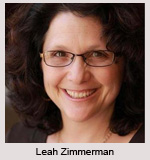Why we Study Torah at Ohr Chayim

 Why do we read Torah on Shabbat? Why is the Torah the center of what we do at the Saturday service? Why is it featured so prominently in our Ohr Chayim curriculum?
Why do we read Torah on Shabbat? Why is the Torah the center of what we do at the Saturday service? Why is it featured so prominently in our Ohr Chayim curriculum?
This article first appeared in G’Vanim, March 2016 issue
Growing up and studying Torah as a puzzle in a logical and methodical way was fascinating, but I felt like I was a witness to something that happened outside of me, separate from me. Torah was interesting to encounter, when a good teacher talked about it. It wasn’t something for me to do myself.
It was later as an adult, when I was teaching Hebrew school and tutoring for B’nai Mitzvah, that I encountered rabbis and synagogues that had a different approach to studying Torah. Through my work with those leaders in those settings, my relationship to Torah shifted from being something apart from myself, to feeling that I was a part of the tradition and more importantly, I was teaching that tradition of interpretation to my students. Since then, it has been important to me to work with students to feel that the process of studying Torah includes them, that the tradition invites them to take ownership and make Torah personal, and that we can connect with words that are thousands of years old.
Inevitably our students will not remember the many stories, characters, and all the information we can teach them one Saturday a week for half the weeks of the year. But, they can learn how to pick up a text, how to read it, reflect upon it, connect to it, and find insight and meaning in it.
They can learn that they are a part of the ongoing tradition, that they have a voice in the Jewish community, and that Torah is there for everyone
to read, interpret and share. As they learn this, they become part of the tradition, and part of the ever-changing nature of Torah study.
At Ohr Chayim, we celebrate the moments of Torah that we learn from our students. This winter, our 4th – 6th grade students have been creating their own comic strip of the book of Exodus. As each child chooses how to draw a particular scene, the artist makes a choice about how to place the characters relative to each other and every other aspect of appearance. Even our youngest students draw the scenes as they hear them and start telling us what they think about the characters, what happened, why and more.
I think that Torah is at the center of our observance because studying text is an accessible tradition. Having a core Jewish text that can be studied by anyone gives us an opportunity to simultaneously connecting with the past, present and future while exploring the meaning of life.
What do you think?




